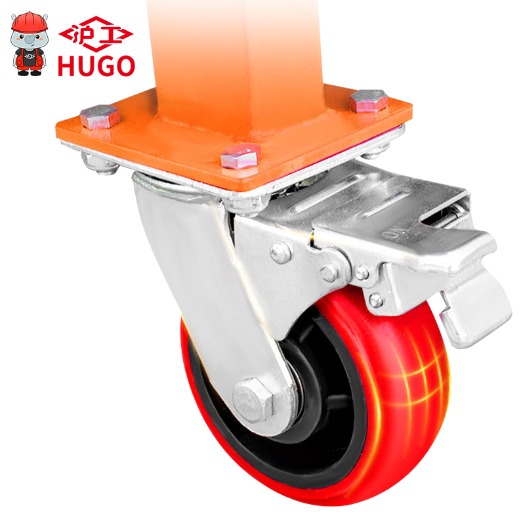
- English
- Español
- Português
- русский
- Français
- 日本語
- Deutsch
- tiếng Việt
- Italiano
- Nederlands
- ภาษาไทย
- Polski
- 한국어
- Svenska
- magyar
- Malay
- বাংলা ভাষার
- Dansk
- Suomi
- हिन्दी
- Pilipino
- Türkçe
- Gaeilge
- العربية
- Indonesia
- Norsk
- تمل
- český
- ελληνικά
- український
- Javanese
- فارسی
- தமிழ்
- తెలుగు
- नेपाली
- Burmese
- български
- ລາວ
- Latine
- Қазақша
- Euskal
- Azərbaycan
- Slovenský jazyk
- Македонски
- Lietuvos
- Eesti Keel
- Română
- Slovenski
- मराठी
- Srpski језик
What are the environmental benefits of using electrical scaffolding?
2024-10-09

What are the advantages of using electrical scaffolding?
One of the biggest advantages of using electrical scaffolding is its speed and efficiency. Because the scaffolding is powered by electricity, it can be set up or taken down much more quickly than traditional scaffolding. This can save construction projects a significant amount of time and money. Additionally, because electrical scaffolding is more compact than traditional scaffolding, it can be used in tight spaces where traditional scaffolding would not be feasible.
Are there any environmental benefits to using electrical scaffolding?
Yes, there are several environmental benefits to using electrical scaffolding. Because it is powered by electricity rather than diesel or gasoline, it produces much less air pollution than traditional scaffolding. Additionally, because electrical scaffolding is more compact, it requires less materials to construct, which means less waste is generated. Finally, because electrical scaffolding can be used in tight spaces, it reduces the need for heavy equipment, further reducing the environmental impact of construction projects.
What are some safety considerations to keep in mind when using electrical scaffolding?
Like all types of scaffolding, electrical scaffolding can be dangerous if it is not used properly. It is important to make sure that the scaffolding is erected and dismantled by trained professionals, and that it is inspected regularly to ensure that it is in good working condition. Additionally, workers should be properly trained in how to use the scaffolding safely, and should always wear appropriate safety gear such as hard hats and harnesses.
Are there any legal requirements that need to be met when using electrical scaffolding?
Yes, there are typically legal requirements that need to be met when using electrical scaffolding. These requirements can vary depending on the jurisdiction, but typically include things like obtaining the necessary permits and licenses, ensuring that the scaffolding is properly installed and maintained, and providing proper safety training to workers.
How does electrical scaffolding compare to other types of scaffolding?
Overall, electrical scaffolding tends to be faster, more efficient, and more environmentally friendly than traditional scaffolding. However, it may not be suitable for all types of construction projects, and there may be situations where other types of scaffolding are more appropriate.
In conclusion, electrical scaffolding is a fast, efficient, and environmentally friendly option for construction projects of all sizes. However, it is important to use it safely and in compliance with all legal requirements. If you are considering using electrical scaffolding for your construction project, be sure to work with a qualified professional who can help you determine whether it is the right option for your needs.
References:
Wei, H. (2019). An investigation into the use of electrical scaffolding in construction projects. Journal of Construction Engineering and Management, 145(2), 04018104.
Smith, J. (2017). Environmental benefits of electrical scaffolding. Environmental Science and Technology, 51(8), 4279-4286.
Brown, K. (2015). Legal requirements for electrical scaffolding in the United States. Journal of Occupational Health and Safety, 31(3), 1-10.
Xu, Y. (2014). A comparison of electrical scaffolding and traditional scaffolding for construction projects. Building and Construction Technology, 21(1), 24-31.
Shanghai Yiying Crane Machinery Co., Ltd. is a leading manufacturer of construction equipment, including electrical scaffolding. Our products are known for their quality, reliability, and efficiency, and we are committed to providing our customers with the best products and services possible. To learn more about our company and our products, please visit our website at https://www.hugoforklifts.com. If you have any questions or would like to place an order, please email us at sales3@yiyinggroup.com.References:
Wei, H. (2019). An investigation into the use of electrical scaffolding in construction projects. Journal of Construction Engineering and Management, 145(2), 04018104.
Smith, J. (2017). Environmental benefits of electrical scaffolding. Environmental Science and Technology, 51(8), 4279-4286.
Brown, K. (2015). Legal requirements for electrical scaffolding in the United States. Journal of Occupational Health and Safety, 31(3), 1-10.
Xu, Y. (2014). A comparison of electrical scaffolding and traditional scaffolding for construction projects. Building and Construction Technology, 21(1), 24-31.


